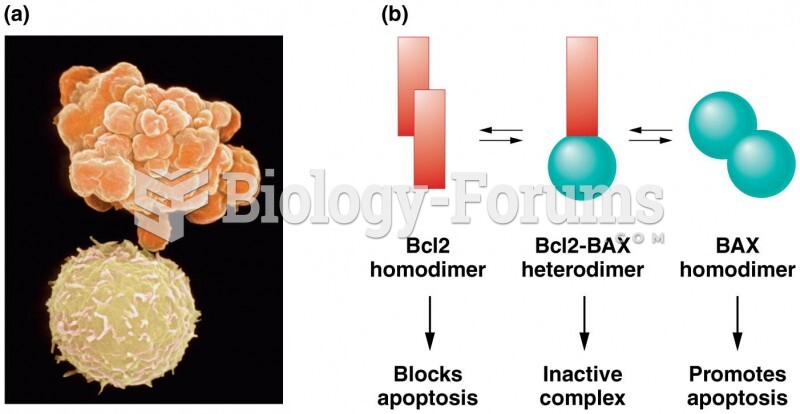|
|
|
As many as 28% of hospitalized patients requiring mechanical ventilators to help them breathe (for more than 48 hours) will develop ventilator-associated pneumonia. Current therapy involves intravenous antibiotics, but new antibiotics that can be inhaled (and more directly treat the infection) are being developed.
It is important to read food labels and choose foods with low cholesterol and saturated trans fat. You should limit saturated fat to no higher than 6% of daily calories.
Vaccines prevent between 2.5 and 4 million deaths every year.
The first oral chemotherapy drug for colon cancer was approved by FDA in 2001.
Cancer has been around as long as humankind, but only in the second half of the twentieth century did the number of cancer cases explode.







